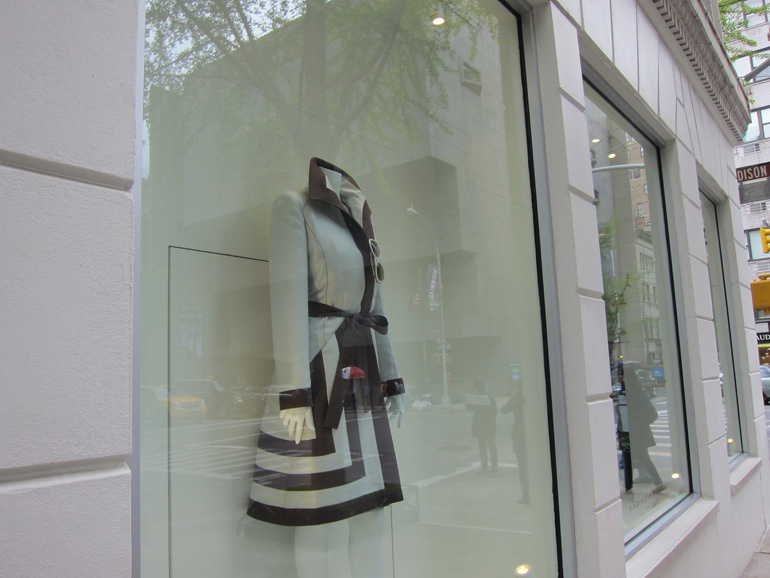
What a surprise it was, to read about Clayton Christensen in the new New Yorker yesterday afternoon. His ideas about business “disruptions” made immediate sense to me, and I could account for my ignorance of them only by thinking back to 1997, when Christensen published The Innovator’s Dilemma. I don’t know what I was doing in 1997 — reading a lot of Trollope, I suppose; I’d joined a Trollope listserv just the year before and was for the moment very engaged in discussions of his novels — but of course I know what I wasn’t doing. I wasn’t keeping a Web log, or even a Web site. I wasn’t scanning hundreds of feeds a week to keep a wetted finger in the breeze. I’m sure that many other tremendously interesting new ideas flew around me back then; I can only hope that writers as good as Larissa MacFarquhar will continue to unearth them for me.
The least surprising detail in MacFarquhar’s account of Christensen’s work is his discovery of the “Church of New Finance.”
After puzzling over this mystery for a long time, he finally came up with the answer: it was owing to the way the managers had learned to measure success. Success was now measured not in numbers of dollars but in ratios. Whether it was return on net assets, or gross-margin percentage, or internal rate of return, all these measures had, in the past forty years, been enshrined into a near-religion (he liked to call it the Church of New Finance) by partners in hedge funds and venture-capital firms and finance professors in business schools. People had come tot think that the most important thing was not how much profit you made in absolute terems but what percentage of profit you made on each dollar you put it. And the belief drove managers to shed high-volume but low-margined products from their balance sheets, even though nobody had ever come across a bank that accepted deposits in ratios. This was why he called it a church: it was an encompassing orthodoxy that made it impossible for believers to see that it might be wrong.
As of course it is: for all their mathematical aura, these “ratios” involve nothing but adolescent erotic calculus, projected onto a larger field. How much trouble does a guy have to take to get into some girl’s panties? That is the ratio; that is the “thinking.” That is the reaasons for New Finance’s immediate appeal and fire-like spread. Did you think that “how much bang for the buck” came out of nowhere?
Whether we’ll be able to stop using ratios faster than the Roman aristocracy stopped eating from leaden saucepans remains to be seen.
***
Something else new: Greta Keller. How did I live to be 64 without having heard her sing before?
By the time I was washing the dinner dishes last night, the playlist in the iPod had come to an end, and I was casting about for something to listen to while I was in the kitchen. In the stack on my writing table, I found a collection of songs recorded between 1932 and 1938 by the Viennese-born “Great Lady of Chanson,” opened it up, and stuck it into the DVD player in the kitchen. The sound was not optimal, even disturbing Kathleen, who can work through anything. A few minutes later, I was able to play the music on a Nano. That sounded better. I remembered choosing this disc from among the others available because one of the numbers is “Music, Maestro, Please,” a song that I didn’t really pay attention to until a few years ago, when I noticed that the weepy lyrics are bucked up by what can only be called a striptease march. It’s a fetching juxtaposition, so profoundly campy that it’s actually funny.
When you hear Greta Keller for the first time, you think of drag queens lip-synching to Marlene Dietrich, because Keller taught Dietrich how to perform. Keller has the better voice, and she sings where Dietrich would strike a pose. Amidst the standards on the album that I’ve got (“Blue Moon,” “Stormy Weather,” “These Foolish Things”) are some interesting Continental items, such as “A Little Ramble in the Springtime With You,” which is sung mostly in German, and “When I Learn French,” which climaxes with “Please teach me some more.” Something about these songs wants to pretend that the Great War didn’t happen, and that its sequel wouldn’t have to. They sing of a parallel world in which the Dual Monarchy has become a world empire dotted with Ruritanian capitals that look a lot like Paris. If you’d like to see the Hollywood version, permit me to recommend either Trouble in Paradise or Midnight. In the end, it took the laid-back, irreverent Sixties to put an end to the dream. Now Greta Keller’s charm seems sad not because her world was reduced by war or economic dislocation but because her kind of sex appeal was discontinued, and therefore became, qua sex appeal (as distinct from a manner of singing, which in her case is timeless), ludicrous. Even gay men are giving up on “darling.”
***
For several days, I’ve been mulling over Charles Rosen’s essay, “Hofmannsthal and Radical Modernism,” which appears in his formidable collection, Freedom and the Arts (Harvard). The center of the essay is a discussion of a work that I didn’t know of, Hofmannthal’s so-called “Chandos Letter.” The Letter is a manifesto of sorts, cloaked in the costume-drama allure of a late-Sixteenth Century date, but frankly modernist in substance. Having been one of the outstanding lyric prodigies of German letters, the still-young Hofmannsthal woke up, as it were, to an understanding of the world that made poetry impossible. Here is Rosen:
Lyric poetry is properly the expression of the most personal and individual thoughts and feelings. But Hofmannsthal would claim later: “The individual is inexpressible. What is expressed already slips into generality, and is no longer individual in the strictest sense. Language and individuality are opposed.” Language is social not personal; words must be understood by others, an idiolect is non-sense. There are no special words to convey what I alone have experienced. What is most individual, most deeply personal, is therefore perverted and ruined by being put into words.
“Perverted and ruined” — loaded words. Looking at this paragraph from the other side of the Cognitive Revolution, I see Hofmannsthal and, in a more muted way, Rosen himself, as shocked by preliminary tremors of the upset; and that inclines me to regard Modernism as something like an allergic reaction not so much to the world as it had been understood before (before the Enlightenment, before the Industrial Revolution, before Freud) as to the hope that springs eternal, the hope for a new world. A new world could, according to imaginations that had been damaged by the shock of the new, only be dystopian; there was no reason to look forward to it. (Although some Modernists did, they tended toward the totalitarian megalomania of Le Corbusier, making the backsliders like Eliot and Stravinsky and Matisse preferable companions.) I haven’t really perused the essays on literature that constitute that last part of Rosen’s collection, but I expect that it would take long to find mention of “alienation” as an attribute of Modernism.
I’ll be frank: I’m heartened by the idea of Modernism as a pathology. It has always, all might life, struck me as wrong, and as I’ve grown older I’ve seen it as inherently wrong, not, as I thought when I was young, wrong simply for dismissing everything that had gone before. The Modernist impulse (I don’t believe that it was ever crystalized into an idea) was a matter of repulsion and rejection.
In another essay, “Modernism and the Cold War,” Rosen writes of Modernism’s failure to win support in the United States.
The relative, or even absolute lack of success in America is not due to the absence of brainwashing propaganda, but to the fact that almost all modernist art is rebarbative at first encounter and requires several experiences of it to come to terms.
This acknowledgment is almost sweet. Certainly there are artworks cast in the Modernist idiom that take their places, once we’re familiar with them, alongside all the other artworks that we know. But there are many that don’t, that just go on remaining rebarbative, that are meant to be unpleasant, because that is what they record: the trauma of realizing that (just as Hume always insisted) there is no natural connection between the order of the universe and the order that we perceive. The order that we perceive is determined by the struture of our brains, not by actual perception. There is a rough congruence between the two orders — there would have to be, or we would have evolved into extinction. But the truths that we need lie hidden within ourselves. And, as Hofmannsthal vaguely grasped, they are not individual. We are none of us individuals. We are all of us variations.
***
It’s the middle of the evening, and I may clip this paragraph and recycle it tomorrow. I’ve just watched W./E. for the second time, and I feel as though I’ve been to the coronation of a pope. It’s not just the stories that the movie has to tell, but the movie itself, the presence, metamorphosed, of Madonna Ciccone, the director and co-writer of the film. There were two moments that took me back — took me back to the early Eighties, when music videos were the cool new thing and Madonna was not quite that cool. Never mind what they were — all right, the second was the absolutely immortal Twist just before the end — the point is that, with this movie, Madonna becomes the person she always, I think, wanted to be, and yet never can be, except perhaps through a movie (and not in it). It is as though she discovered that for us to find out who she really is, she has to be invisible, because, if we can see her, we’ll be distracted by everything that she tried to be instead. So she enlists Abbie Cornish and Andrea Riseborough to stand in for her, or to be her bridesmaids, perhaps. There is a way in which this movie, more than anything else the performer has ever done, is all about the girl from Bay City. Like a ghost in her own movie, Madonna presses against the screen from time to time, never moreso than in the long scene in which Wallis writes and Wally reads the letters that, quite miraculously actually, it seems, Mohammed el-Fayed has held on to all these years, letters that will eventually change the whole Abdication story.
As to the movie part of the movie, there were two delights about seeing it the second time. First, I knew where the Abbie Cornish plot line was going and I was be comfortable with it. It stands up well on its own (thanks in no small degree to Oscar Isaac, a genuine screen gem), and it supports the pointilliste re-telling of the older tale. Second, I marveled at Andrea Riseborough’s voice. Her voice and her accent. I can remember when ladies from the Upper South talked just like her, especially after a martini or two. I don’t know where the actress picked it up, but she nailed it. I adored the poise with which she and Ms Cornish stand up from the park bench at the end: ladies down to the ground.




















